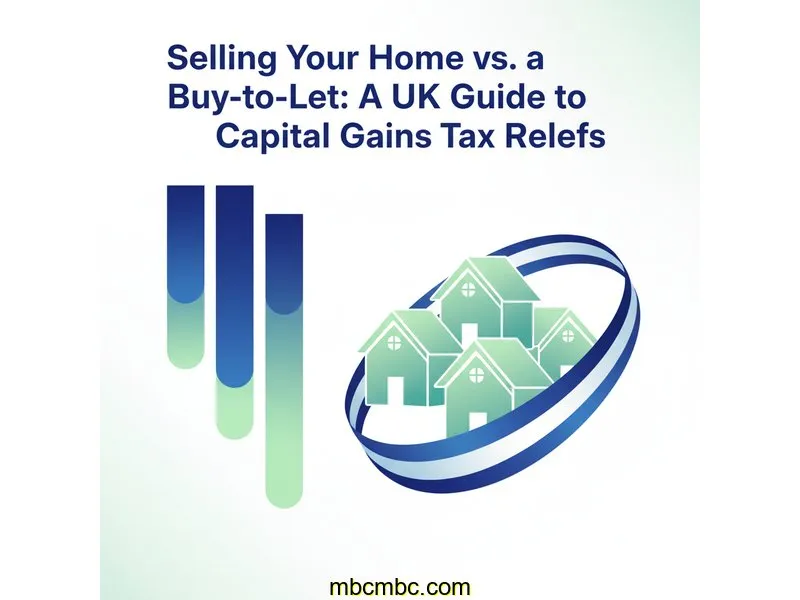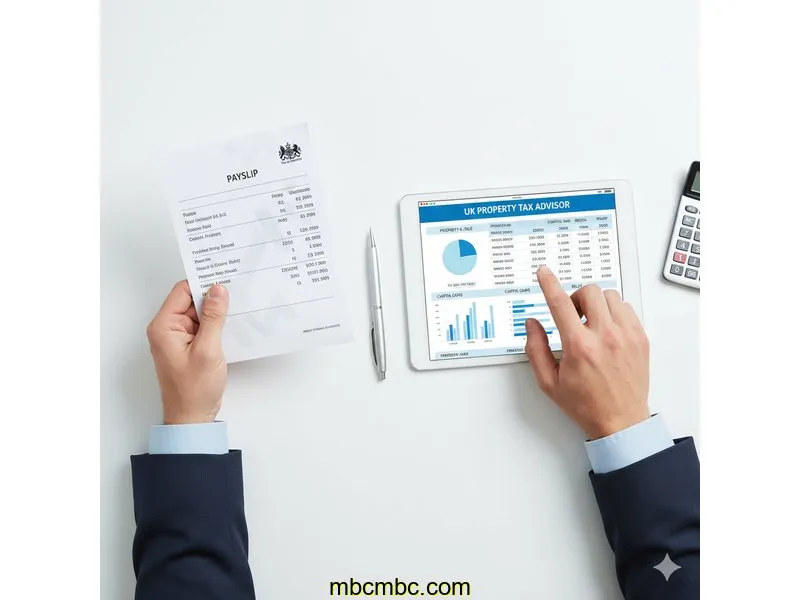
Selling a property in the UK can be a significant financial event. For many, the profit (or 'gain') unlocked from a sale is a welcome boost. However, it's crucial to understand how this profit is viewed by HMRC. You've likely heard of Capital Gains Tax (CGT), but it's a tax that applies very differently depending on the type of property you're selling.
The key difference lies in one simple question: was this property your home, or was it an investment? Selling your main residence is often completely tax-free, thanks to a generous relief. Selling a buy-to-let or second home, however, is a different story, and recent changes mean more landlords are facing a tax bill than ever before.
This guide explains the critical differences between these scenarios, focusing on the reliefs that define your tax position and the recent changes to the tax-free allowance you need to know about.
Quick Summary
- What is CGT? It's a tax on the *profit* (the 'gain') you make when you sell an asset that has increased in value.
- Your Main Home: Selling your main home is usually tax-free due to a relief called Private Residence Relief (PRR).
- Buy-to-Let / Second Home: You are liable for CGT on any gains you make.
- The Allowance is Shrinking: The tax-free Annual Exempt Amount (AEA) was cut to £6,000 in April 2023 and again to just £3,000 from April 2024.
- Tax Rates: For property gains, basic-rate taxpayers pay 18%, and higher-rate taxpayers pay 28% on the profit above the £3,000 allowance.
What Exactly is a 'Capital Gain' on Property?
Before we discuss tax, it's essential to know what the 'gain' actually is. It's not the total sale price—it's the profit. The basic calculation is simple:
Sale Price - (Original Purchase Price + Allowable Costs) = Total Gain
"Allowable Costs" are crucial as they reduce your gain. They include things like the Stamp Duty you paid when you bought the property, solicitor fees, and estate agent fees (for both buying and selling). They can also include costs for *capital improvements*, like building an extension, but not for maintenance, like redecorating.
This 'Total Gain' is what you're potentially taxed on. The most important factor, however, is the relief you can claim.
Scenario 1: Selling Your Main Home (Private Residence Relief)
For the vast majority of UK homeowners, there is good news. When you sell your main home, you are protected by Private Residence Relief (PRR). Think of PRR as a shield that makes your gain tax-free.
You are generally eligible for full PRR if:
- The property has been your only or main residence throughout your entire period of ownership.
- You haven't let part of it out (though having a single lodger may be fine).
- You haven't used part of it exclusively for business purposes.
- The garden or grounds are not excessively large (usually under half a hectare).
A key feature of PRR is that the final 9 months of ownership are always treated as if you were living there, even if you've already moved out. This provides a helpful buffer period for selling. If you meet these conditions, your gain is £0, and you don't even need to report the sale to HMRC.
Scenario 2: Selling a Buy-to-Let or Second Home
This is where CGT becomes a significant factor. A property you've never lived in, such as a buy-to-let or a holiday home, is not eligible for Private Residence Relief. When you sell it, the entire gain is exposed to tax.
Here's the process:
- Calculate the Total Gain: (Sale Price) - (Purchase Price + Allowable Costs).
- Deduct Your Allowance: Subtract your Annual Exempt Amount (AEA). For the 2024/2025 tax year, this is just £3,000 per person.
- Calculate the Taxable Gain: The amount left after deducting the £3,000 allowance is your 'taxable gain'.
- Pay the Tax: You pay CGT on this taxable amount. The rate depends on your Income Tax band. Basic-rate taxpayers pay 18%, while higher and additional-rate taxpayers pay 28%.
Crucially, you must report and pay any CGT due on UK residential property to HMRC within 60 days of the sale's completion. This is a tight deadline that catches many landlords by surprise.
Scenario Comparison: Main Home vs. Buy-to-Let

The difference in tax treatment is stark. Here is a simple comparison of the three most common scenarios when selling a property.
| Scenario | Property Type | Lived in Property? | Private Residence Relief (PRR)? | Potential CGT Liability |
|---|---|---|---|---|
| Selling Main Home | Primary Residence | Yes, full period | Full Relief applies | £0 (in most cases) |
| Selling BTL Property | Investment Property | No | No Relief applies | Liable for CGT on gains above the £3,000 allowance |
| Selling a Former Home | Mixed Use (Home then BTL) | Yes, for part of the period | Partial Relief applies | Complex calculation. The gain is split, and part will be taxable. |
How Calculators Help Understand CGT
As you can see, while the concept of CGT is simple, the calculations can become complex, especially for landlords. This is where estimation tools can be invaluable. A Capital Gains Tax calculator helps you model your potential liability by:
- Prompting you to gather all your 'Allowable Costs', ensuring you don't forget deductions like stamp duty and solicitor fees.
- Correctly subtracting the current Annual Exempt Amount (£3,000 for 2024/25).
- Applying the correct tax rate (18% or 28%) based on your income level.
Using a calculator allows you to see an estimate of your bill *before* you sell, which is essential for financial planning. It turns a confusing set of rules into a clear, estimated figure.
Common Questions About UK Property Capital Gains Tax
The rules around CGT reliefs can be specific, leading to many common questions.
What 'allowable costs' can I actually deduct from my property's capital gain?
You can deduct costs directly related to buying, selling, or improving the property. This includes: Stamp Duty Land Tax (SDLT) paid on purchase, solicitor/conveyancing fees, estate agent fees, and valuation costs. You can also deduct costs of *capital improvements* (e.g., building an extension, adding a new kitchen), but *not* routine maintenance (e.g., repainting, fixing a leak) or mortgage interest.
I rented out my main home for a few years. Do I lose all my Private Residence Relief?
Not necessarily. This creates a "mixed-use" scenario. You get PRR for the period you lived there, *plus* the final 9 months of ownership (which are always exempt). The portion of the gain relating to the rental period will be taxable. You may also be eligible for Lettings Relief, but rules since April 2020 mean this relief is now much less generous and generally only applies if you were living in the property at the same time as your tenant.
My partner and I sold a property. Do we both get the £3,000 allowance?
Yes. If you own the property jointly (e.g., 50/50), the capital gain is split equally between you. Each of you can then use your own individual £3,000 Annual Exempt Amount against your share of the gain. This means a jointly owned property can make a £6,000 gain before any tax is due.
Conclusion: Know Your Position
Understanding your Capital Gains Tax position is vital. For most homeowners selling their main residence, Private Residence Relief provides a complete shield from this tax. For buy-to-let landlords, however, CGT is a near certainty.
With the tax-free allowance now at a historic low of £3,000, more property investors than ever will find themselves liable. Planning ahead, meticulously tracking your allowable costs, and understanding the 60-day payment deadline are essential steps to managing your finances effectively.
Disclaimer: This article provides general information about Capital Gains Tax on property in the UK and is for informational purposes only. It does not constitute financial or tax advice. The tax rules, especially around reliefs and allowances, are complex and subject to change. Your individual circumstances can significantly affect your tax liability. You should consider speaking with a qualified accountant or tax advisor for advice tailored to your specific situation.

